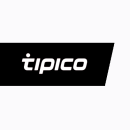The voice of the customer can act as a bright flashlight, illuminating previously unseen parts of the product experience.
Sports betting provider Tipico experienced this impact firsthand when its user interviews revealed that customers new to app-based wagering were unsure how to place bets on the company’s platform. Motivated by these findings, the product team responded swiftly to revamp the platform and, ultimately, enhance the customer experience for all.
“We used this information to improve our bet placement journey, as well as our user interface, so that customers can easily see what they must do after selecting an outcome to place their bet,” said Nate Vogels, a frontend product lead at Tipico.
Tipico is one of four featured companies that are committed to harnessing the power of customer feedback to shape their product strategies. At every stage of the product life cycle, these teams are intentional about soliciting and receiving input from clients through customer satisfaction surveys, net promoter scores, user interviews, focus groups, social media messages, app reviews and more.
With the help of a number of digital tools, including UserZoom, Salesforce and Slack, teams then transform this data into powerful insights about customers’ wants and needs, which inform their product features and priorities moving forward.
Leaders from Tipico, Valon, Truehold and Dandy sat down with Built In New York to share how their teams leverage the voice of the customer to spotlight product high points and shed light on areas for growth.

Valon helps homeowners navigate the mortgage servicing process and make informed financial decisions.
How does Valon gather feedback to capture the voice of the customer?
As a mortgage servicer, we gather feedback from homeowners through four main channels: transfer surveys, ongoing net promoter score surveys, customer satisfaction surveys and user interviews.
The transfer survey is a unique moment for feedback that is specific to our business, as homeowners do not actively engage with us; instead, the mortgage owner or servicer decides to make the change. We turn this moment of friction and anxiety into a moment of delight and security by collecting feedback from homeowners and using it to improve our product.
Our transfer survey, therefore, is a critical anchor of our voice of the customer and overall product strategy. Our net promoter score and customer satisfaction surveys are also industry standards for gauging continual homeowner satisfaction and judging the quality of our person-to-person interactions. These interactions are used to identify areas where our servicing team can benefit from better tools and workflows that we can build into the product, which ultimately equips our homeowners with better support.
As a technology-forward company, we are always looking for ways to improve our product, and customer feedback is critical to our overall product strategy.
We turn this moment of friction and anxiety into a moment of delight and security by collecting feedback from homeowners and using it to improve our product.”
How do you synthesize this data in order to uncover deeper insights into your customers’ preferences?
Visibility is the most important ingredient to our recipe for gaining insights. Internally, we have a voice of the customer dashboard that aggregates information from several surveys. As a startup, we are still learning a ton about our homeowners; we have four times as many homeowners on our platform as we did this time last year.
Many factors influence homeowners’ experiences with us; therefore, we review population-wide data alongside cohorted data for each monthly grouping of newly onboarded homeowners and use this as a primary basis for comparison. Other factors include the originator who underwrote their loan, mortgage age or duration from loan origination to now, and registration status.
Tracking homeowner feedback for each stage — from transfer through servicing interactions with the customer satisfaction surveys and over time with the net promoter score surveys — helps us gain a holistic understanding of homeowner sentiment.
We also keep a pulse on individual responses to these surveys. All responses are automatically routed to one of two internal Slack channels: one for positive feedback and one for negative feedback. We use these channels to triage feedback in real time and spotlight issues quickly.
How do you leverage the voice of the customer to improve the customer journey and inform your product strategies?
Valon has utilized customer feedback to improve two critical aspects of its user experience: initial welcome communications and registration. Customers had expressed dissatisfaction with the amount of unnecessary information in the welcome letters, and the process was overall neutral.
We redesigned the content to proactively initiate email communication before transfer, streamline the main welcome letter and add clarity to help customers navigate the process. The result was a positive response, with customers commenting that the process within 90 days of onboarding was “transparent” and “helpful.”
Valon also received feedback from homeowners that they were apprehensive and anxious when introduced to different products, such as our insurance or lending services, during the registration process. To alleviate this, Valon prioritized setting up payment details and access to the dashboard to manage payments with new accounts. This allows homeowners to evaluate additional products after they address their top concern — paying their mortgage — without added anxiety.
By prioritizing the customer voice, Valon has improved its user experience and demonstrated a commitment to customer satisfaction.

Truehold provides residential sale-leasebacks for people who want to sell their homes without moving.
How does Truehold gather feedback to capture the voice of the customer?
The best way for us to capture the voices of Truehold customers is through direct feedback. We do this in quite a few ways, such as collecting product satisfaction data or net promoter scores at various sales funnel points. Additionally, sometimes, our specialists conduct post-close surveys to refine our experience. Our brand team is also constantly interviewing residents to learn about their personal journey to Truehold.
When we develop new offerings, we make sure to work with our customers and leverage the data we’ve gathered; it’s a really technical, but important process. We first identify user needs and explore early concepts and solutions in one-on-one interviews and small focus groups. Through Pollfish surveys, we validate our hypotheses and then run A/B tests in UserZoom to make sure the features we’ve designed clearly accomplish our goal. Then, we use a randomized testing system in Salesforce that allows us to assign control and test groups to measure the impact of our improvements.
The bottom line is that almost everyone has a deeply personal connection to their home before they sell. A big part of Truehold’s success to date is respecting those connections and incorporating them into our approach.
How do you synthesize this data in order to uncover deeper insights into your customers’ preferences?
Truehold’s transaction portal is our home base for customers as they take one of the biggest steps of their lives — selling their home. We have a steady stream of insights coming in from analyzing the ways in which our residents engage with the portal on a daily basis.
For example, we use UserZoom, which allows you to clip and share videos of a user’s experience. We also use LogRocket for product analytics, tracking weekly active users, feature usage, funnel fallout and heat maps to see what most engages and frustrates customers about our digital experience. We then share this information with the Truehold design and engineering teams as we continue to iterate our portal offerings.
My team is always in dialogue with sales to better understand our customers’ biggest pain points in the Truehold funnel.”
How do you leverage the voice of the customer to improve the customer journey and inform your product strategies?
My team is always in dialogue with sales to better understand our customers’ biggest pain points in the Truehold funnel. By building new features that ease or reverse those difficulties, the voice of the consumer shines through.
My favorite example of this right now is our new photo upload portal feature. Truehold sends an initial offer to customers based on an in-depth conversation that our Truehold specialists have with homeowners. Although specialists will request photos on the call, homeowners don’t always know how to most accurately showcase their homes. For example, variances in photo quality and completion can affect pricing, creating a difficult experience for the homeowner.
Our solution was a structured photo upload experience that guides the user through the exact categories and types of photos our underwriters want to see. I am confident this will change both the internal sales process and customer experience for the better.
Tipico runs a mobile sports betting platform.
How does Tipico gather feedback to capture the voice of the customer?
We have several channels of communication that provide us with feedback from our customers. Consolidating these channels gives us a holistic view into what our customers are saying.
We regularly send customer surveys on a wide range of topics, from feedback on specific features to their overall experience. Social media gives us a way to communicate with customers in a setting that feels more human. We receive feedback via direct messages or comments on our social posts.
Our customer service team talks to customers every day and provides weekly summaries of inquiries grouped by topic and product area. Our user experience research team conducts in-person and virtual customer interviews and usability studies to get better visibility into how people use our product, what pain points they run into and what kinds of reactions they have to our product.
Our user experience research team, in conjunction with the product design team, is also working on creating various touch points of in-app user feedback, so we can better track things like user satisfaction and key user journeys.
How do you synthesize this data in order to uncover deeper insights into your customers’ preferences?
We use several tools to visualize and synthesize qualitative and quantitative data. Our primary source of truth is our data warehouse visualization tool, which consolidates data sources and creates charts and reports that reflect feedback from all sources.
Some of the tools we use for customer feedback include Salesforce, UserZoom, SurveyMonkey, Mixpanel and app store reviews. Additionally, our user experience research team is currently implementing a program that will help us better segment our customer base and build more in-depth user personas.
We reference customer feedback and pain points in every stage of our product lifecycle, from research and design to launch.”
How do you leverage the voice of the customer to improve the customer journey and inform your product strategies?
We reference customer feedback and pain points in every stage of our product lifecycle, from research and design to launch.
For example, when doing user interviews with customers who were unfamiliar with app-based sports betting, we learned that it was not obvious for a new customer to know how to place a bet. We used this information to improve our bet placement journey, as well as our user interface, so that customers can easily see what they must do after selecting an outcome to place their bet.
Dandy is on a mission to simplify and integrate every function of the dental practice with technology.
How does Dandy gather feedback to capture the voice of the customer?
At Dandy, product managers gather the voice of the customer from many sources and through various channels.
First, product managers keep a regular practice of interviewing customers and writing up reports. Next, we use Slack extensively to receive posts from stakeholders who work with customers every day and need to pass along top-of-mind feature requests and product issue reports. We review a dashboard that summarizes customer support tickets into themes.
Finally, I'm spinning up product listening posts, which are recurring sessions with customer-facing teams to dive deep into their top customer concerns. Product managers compile all these sources to develop a rich understanding of our customers’ needs.
How do you synthesize this data in order to uncover deeper insights into your customers’ preferences?
The product team at Dandy relies on tools and technologies to make data-informed decisions that solve real customer needs.
We generate customer support reports using a popular business intelligence platform and a data taxonomy. Through FullStory, we replay user sessions and identify surface areas in the product that cause customer experience issues. We also use Amplitude to draw high-level insights about product usage.
The voice of the customer helped me discover that one product I own is used for secondary jobs in addition to the customer job it was designed for.”
How do you leverage the voice of the customer to improve the customer journey and inform your product strategies?
The voice of the customer helped me discover that one product I own is used for secondary jobs in addition to the customer job it was designed for.
I’ve developed a product strategy with two time horizons. In the short term, it improves the experience for the main use case while doing no harm to the other ones. Long term, it untangles the spaghetti strands in this product and creates intentional user experiences to solve each job.













